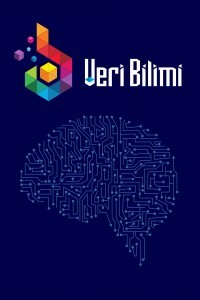Otel Rezervasyon İptallerinin Makine Öğrenmesi Yöntemleri ile Tahmin Edilmesi
Konaklama hizmeti veren otellerin maksimum kâr elde edebilmesi için doluluk oranlarının yüksek olması gerekmektedir. Bu sebeple oteller rezervasyon sistemleri aracılığıyla sınırlı sayıdaki odalarını doğru zamanda, doğru müşteriye tahsis etmelidir. Ancak rezervasyonlar çeşitli nedenlerle müşteri tarafından iptal edilebilmektedir. Oteller açısından iptal edilen rezervasyonlar doğru politikalar izlenmezse gelir kaybına neden olabilmektedir. Bu sebeple iptallerin önceden tahmin edilmesi büyük önem taşımaktadır. Bu çalışmada, makine öğrenmesi teknikleriyle 5 farklı otele ait toplam 38.826 kayıttan oluşan hotel rezervasyon verisi kullanılarak otellerin gelecekteki rezervasyonlarının iptal durumları tahmin edilmeye çalışılmıştır. Çalışmada sınıflandırma algoritmalarından Random Forest Algoritması (RF), Destek Vektör Makineleri (SVM), k-En Yakın Komşu (kNN) ve Karar Ağacı (C4.5) algoritmaları kullanılarak 4 farklı model oluşturulmuş ve modellerin performans karşılaştırmaları yapılmıştır. En iyi sonuç %73 doğruluk oranı ile C4.5 karar ağacı algoritmasından elde edilmiştir.
Anahtar Kelimeler:
otel rezervasyon iptali, makine öğrenmesi, danışmanlı öğrenme
Predicting Hotel Reservation Cancellation by Using Machine Learning Methods
In order to maximize profit for hotels, occupancy rates must be high. For this reason, hotels should allocate a limited number of their rooms to the right customer at the right time using reservation systems software. However, reservations may be cancelled by the customer for various reasons. Cancellations may result for hotels in loss of income if the right policies are not processed. For this reason, it is very important to estimate reservation cancellations. In this study, the hotel reservation data set consisting of 38,826 records of 5 different hotels were analyzed by machine learning algorithms to estimate the cancellation of future bookings of hotels. In this context, 4 different models were formed in this study by using Random Forest (RF), Support Vector Machines (SVM), k-Nearest Neighbor (kNN) and Decision Tree (C4.5) algorithms and then, performance comparisons were made among these models. The best result was obtained from C4.5 decision tree algorithm with 73% accuracy.
___
- [1] Kimes SE, Wirtz J. “Has revenue management become acceptable? Findings from an international study on the perceived fairness of rate fences”. J. Serv. Res., 6(2), 125–135, 2003.
- [2] Mehrotra R, Ruttley J. “Revenue management”. (2nd ed.). Washington, DC, American Hotel and Lodging Association, 2006.
- [3] Smith SJ, Parsa HG, Bujisic M, van der Rest JP. “Hotel cancelation policies, distributive and procedural fairness, and consumer patronage: A study of the lodging industry”. J. Travel Tour. Mark., 32(7), 886–906, 2015.
- [4] Morales DR, Wang J. “Forecasting cancellation rates for services booking revenue management using data mining”. Eur. J. Oper. Res., 202(2), 554–562, 2010.
- [5] Liu PH. “Hotel demand/cancellation analysis and estimation of unconstrained demand using statistical methods”. Revenue Manag. Pricing Case Stud. Appl., 91–101, 2004.
- [6] Carbonell CG, Michalski RS, Mitchell TM. “An overview of machine learning”. In Machine Learning, San Francisco, CA, Morgan Kaufmann, 3-23, 1983.
- [7] Sullivan W. “Machine learning Beginners Guide Algorithms Supervised & Unsupervised learning, Decision Tree & Random Forest Introduction”. USA, CreateSpace Independent Publishing Platform, 2017.
- [8] Pölt S, “Forecasting is difficult–especially if it refers to the future”. In AGIFORS- Reservations and Yield Management Study Group Meeting Proceedings, 61–91, 1998.
- [9] Antonio N, de Almeida A, Nunes L. “Predicting hotel booking cancellations to decrease uncertainty and increase revenue”, Tour. Manag. Stud., 13(2), 2017.
- [10] Ho TK. “Random decision forests”. In Document analysis and recognition, 1995., proceedings of the third international conference on, 1, 278–282, 1995.
- [11] Breiman L. “Random forests”. Mach. Learn., 45(1), 5–32, 2001.
- [12] Louppe G. “Understanding Random Forests: From Theory to Practice”. Doktora Tezi, University of Liege, Belgium, 2014.
- [13] Breiman L, Cutler A. “Random forests - classification description”. 2005. [Çevrimiçi]: https://www.stat.berkeley.edu/~breiman/RandomForests/cc_home.htm. [Erişim: 10-Nis- 2018].
- [14] Liaw A, Wiener M. “Classification and Regression by randomForest”. R News, 2(3), 18-22, 2002.
- [15] Cunningham P, Delany SJ, “k-Nearest neighbour classifiers”, Mult. Classif. Syst., 34(8), 1–17, 2007.
- [16] Balaban ME ve Kartal E, “Veri madenciliği ve makine öğrenmesi temel algoritmaları ve R dili ile uygulamaları”. 2. Baskı. İstanbul, Çağlayan Kitabevi, 2018.
- [17] Bhatia N. “Survey of nearest neighbor techniques”, ArXiv Prepr. ArXiv10070085, 2010.
- [18] Vapnik V, Lerner A. “Pattern recognition using generalized portrait method”. Autom. Remote Control, 24, 774-780, 1963.
- [19] Nayak J, Naik B, Behera H. “A comprehensive survey on support vector machine in data mining tasks: applications & challenges”. Int. J. Database Theory Appl., 8(1), 169–186, 2015.
- [20] Quinlan JR. “C4. 5: programs for machine learning”, CA, Morgan Kaufmann Publishers, 1993.
- [21] Kartal E. “Sınıflandırmaya dayalı makine öğrenmesi teknikleri ve kardiyolojik risk değerlendirmesine ilişkin bir uygulama”. Doktora Tezi, İstanbul Üniversitesi, İstanbul, 2015.
- [22] Kartal E, Özen Z. “Dengesiz Veri Setlerinde Sınıflandırma”. İçinde Mühendislikte Yapay Zekâ Uygulamaları, Sakarya, 109-131, 2017.
- [23] Lunardon N, Menardi G, Torelli N, “ROSE: a Package for Binary Imbalanced Learning”.R J., 6(1), 82–92, 2014.
- [24] R Core Team, “R: A Language and Environment for Statistical Computing”. 2017. [Çevrimiçi]: https://www.R-project.org/. [Erişim: 01-Eki-2018].
- [25] Acuna E, The CASTLE Research Group “dprep: Data Pre-Processing and Visualization Functions for Classification”. 2015.
- [26] Meyer D, Dimitriadou E, Hornik K, Weingessel A, Leisch F. “e1071: Misc Functions of the Department of Statistics”. Probability Theory Group (Formerly: E1071), TU Wien. 2017.
- [27] Hornik K, Buchta C, Zeileis A. “Open-Source Machine Learning: R Meets Weka”,Comput. Stat., 24(2), 225–232, 2009.
- [28] Hastie T, Tibshirani R, Friedman J. “The elements of statistical learning: Data Mining, Inference, and Prediction”. 1st ed., New York, Springer, 2001.
- [29] Kuhn M., caret: Classification and Regression Training. 2018.
- Başlangıç: 2018
- Yayıncı: Murat GÖK
Sayıdaki Diğer Makaleler
DNA Dizilerinin Graf Benzetim Yolu İle Karşılaştırılması
Cantekin ÇELİKHASI, Ahmet SAYAR, Adem ULU
Genetik Algoritmalar ile Eğitilen Doğrusal Görüntü Filtre Kalitesinin Bir Analizi
Otel Rezervasyon İptallerinin Makine Öğrenmesi Yöntemleri ile Tahmin Edilmesi
Mehmet BOZ, Erokan CANBAZOĞLU, Zeki ÖZEN, Sevinç GÜLSEÇEN
Yapay Sinir Ağları ile Reklam Sektöründe Kullanıcı Profili Çıkarma Uygulaması: Çin – Türkiye Örneği
Muhammed Kürşad UÇAR, İbrahim TOPAL
